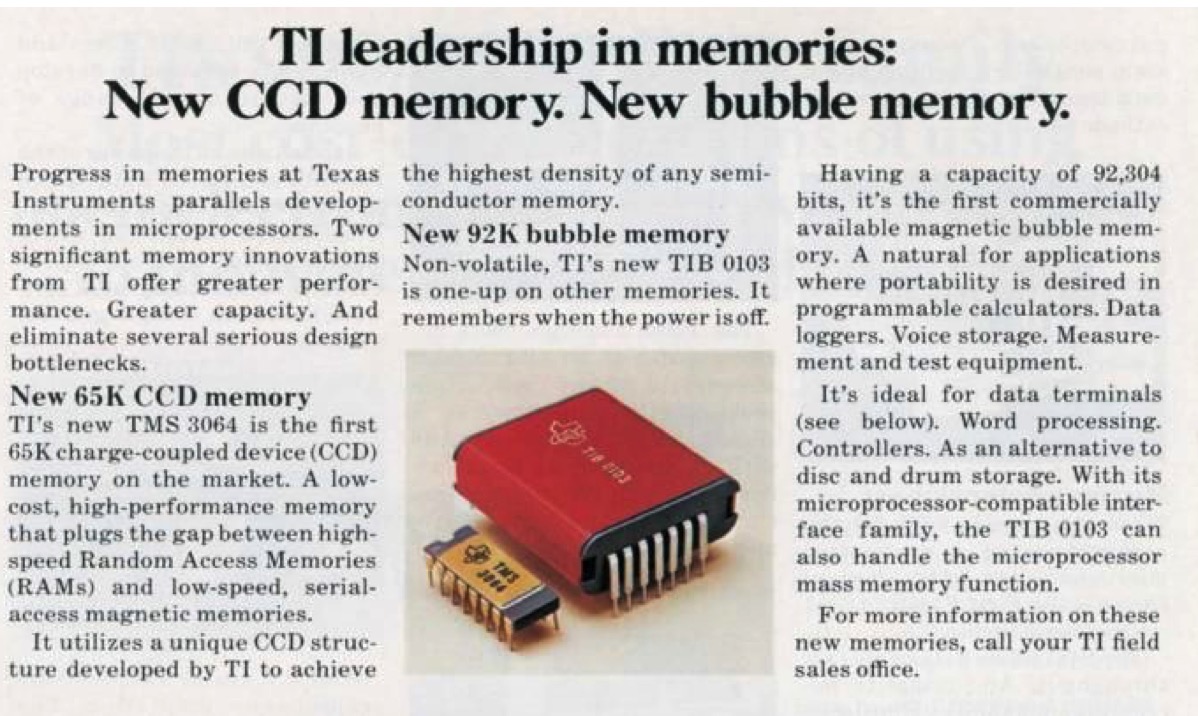History (1977): Bubbles, CCDs and Other Forgotten Memories
Experimental technologies that have been tried, tested and found wanting
This is a Press Release edited by StorageNewsletter.com on May 1, 2018 at 2:25 pmThis article comes from the Computer History Museum.
1977: Bubbles, CCDs & other forgotten memories
Experimental technologies that have been tried, tested and found wanting
TI Advertisement for CCD and Bubble memories (1977)
Click to enlarge

(Source: Texas Instruments, Inc.)
The widely heralded introductions of magnetic bubble and CCD memories by many vendors in the 1970s are just two examples of numerous ingenious information storage technologies that were announced with great fanfare but were ultimately unsuccessful in the marketplace.
The following memories that were soon forgotten are featured on the ‘Innovative Ideas & Stepping Stones’ display of the Memory & Storage gallery of the Computer History Museum Revolution exhibition.
The dates pertain to the specific artifacts on exhibit: Bubble Memory (1979), CCROS (1965), Charge-Coupled Devices (1976), Core Rope Memory (1963), CRAM (1962), Data Cell Drive (1975), Photo-Digital Storage System (1967), Plated Wire (1964), Rod Cell ROM (1969), Thin Film Memory (1962), Transformer Read Only Storage (1964).
Several technologies originally developed for storage devices subsequently found important roles in other applications. Charge Coupled Devices (CCDs) contain rows of capacitive elements connected to form a shift-register memory. Bell Labs researchers Willard Boyle and George Smith invented the CCD memory for which they earned the 2009 Nobel Prize in physics. A team including Ed Zimany and Carlo Sequin under Michael F. Tompsett developed the CCD imaging chip that revolutionized photography. Thin film techniques applied to magnetic memory were later employed to fabricate improved disk and tape drive heads.
Cryogenics and holography are both technologies that date back many years without yielding viable commercial products but that still enjoy ongoing R&D investment. Josephson Junctions and superconducting materials that store data in baths of liquid helium at temperatures close to absolute zero have been actively investigated since the 1960s. Dennis Gabor of the BTH Research Laboratory, England received the 1971 Nobel Prize in physics for data storage holography experiments that began in 1948 and continue today.














 Subscribe to our free daily newsletter
Subscribe to our free daily newsletter

